This International Day of Women and Girls in Science we celebrate the role of women and girls in science, not only as beneficiaries but also as agents of change. We acknowledge this important day by profiling women who have pursued careers in science, to inspire Victoria’s future female scientists.
We’re excited to introduce a few members from the Monash Nova Rover team who are designing, fabricating and testing next generation Mars and Lunar rovers in Melbourne.
Gemma Quinn is senior member of this highly successful Monash Nova Rover team; some of her senior team members include Chloe Chang, Bec Leith, Michelle Fisher and Siena Zubcic. The team’s vision is to advance the development and representation of the Australian space sector on the global stage and foster engagement in STEM amongst younger generations.
Gemma explains, “My love of STEM has led me to study Aerospace Engineering and Immunology, and I enjoy working with the team that shares this passion. I'm the previous Chief Science Engineer of the Monash University Nova Rover team, co-leading the science team alongside Lauren Jennings to build science payloads that help the rover collect regolith, detect water, and determine signs of life.”
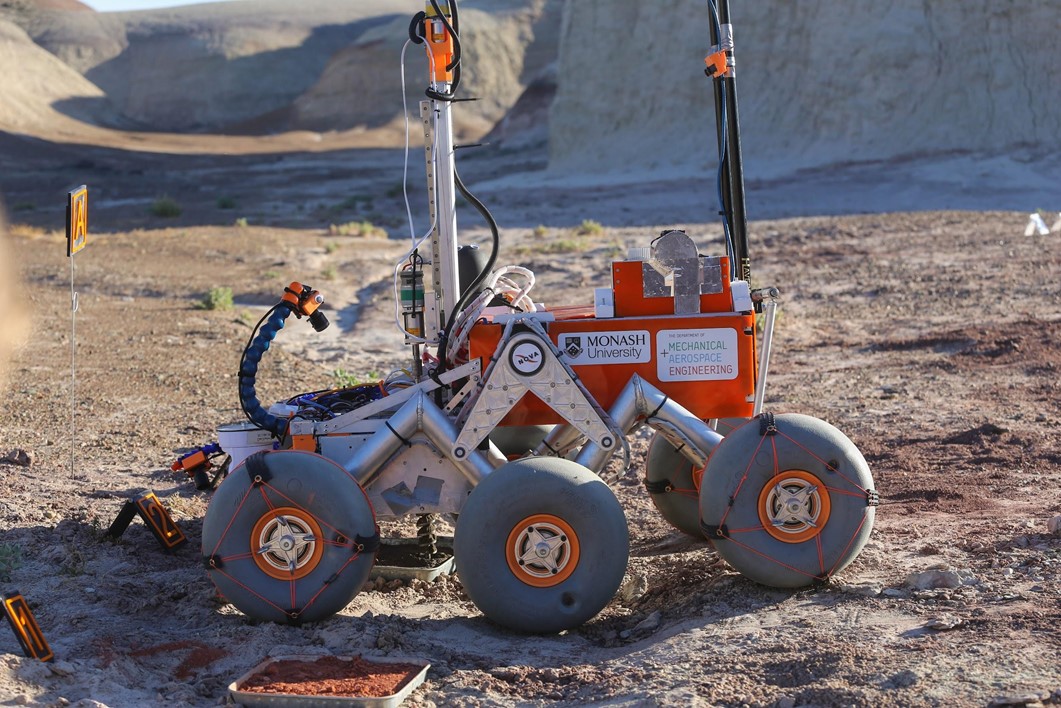
University Rover Challenge, Science task (2019)
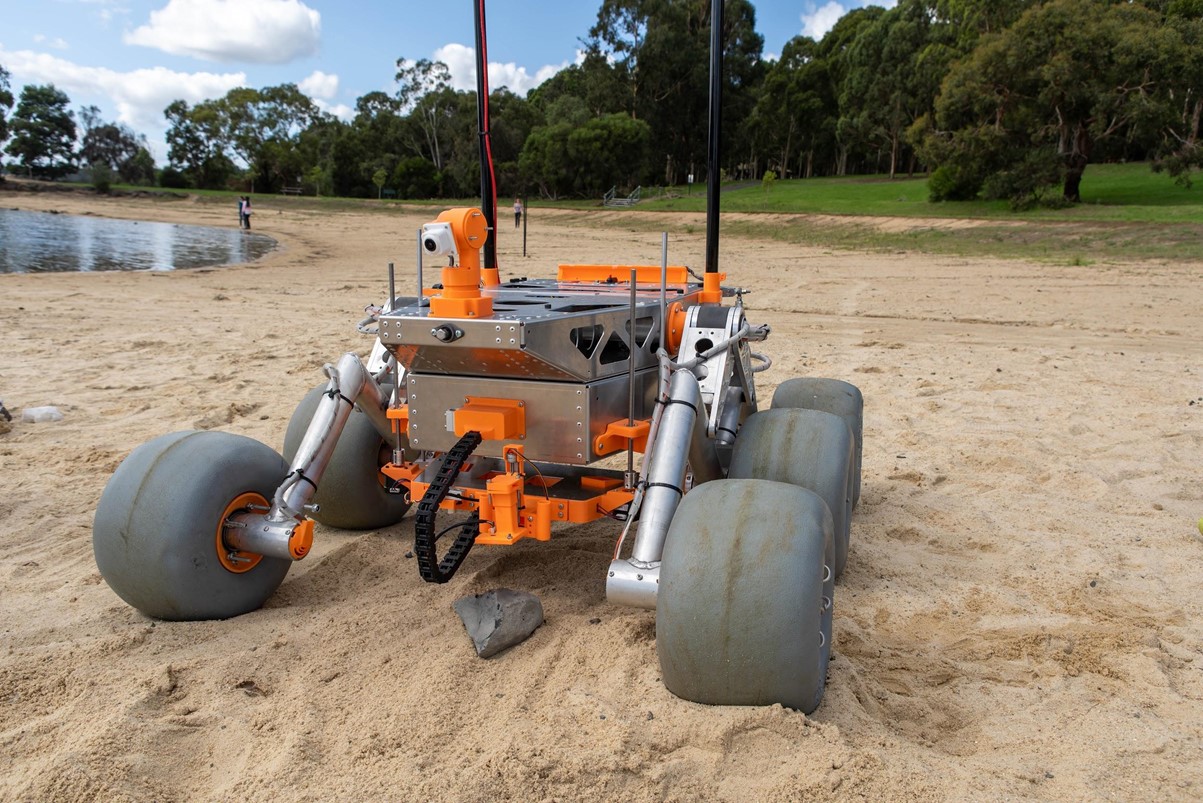
Rover and Science Payload imaging rock at field test (2020)
Chloe says, “I like science because it is the language that describes everything in the known universe”. She also touches on “fear of failure that stops more people especially women from pursuing a career in the male-dominated field”.
Bec explains, “A big obstacle has been feeling the need or being asked to explain myself when I say I love STEM. I find that friends and even family challenge me and can’t believe that I could enjoy STEM when I’ve always been known as the ballerina. There is also the tendency for people to believe that because of being in the minority, employers will be more likely to hire females and therefore, my gender outweighs my skills”.
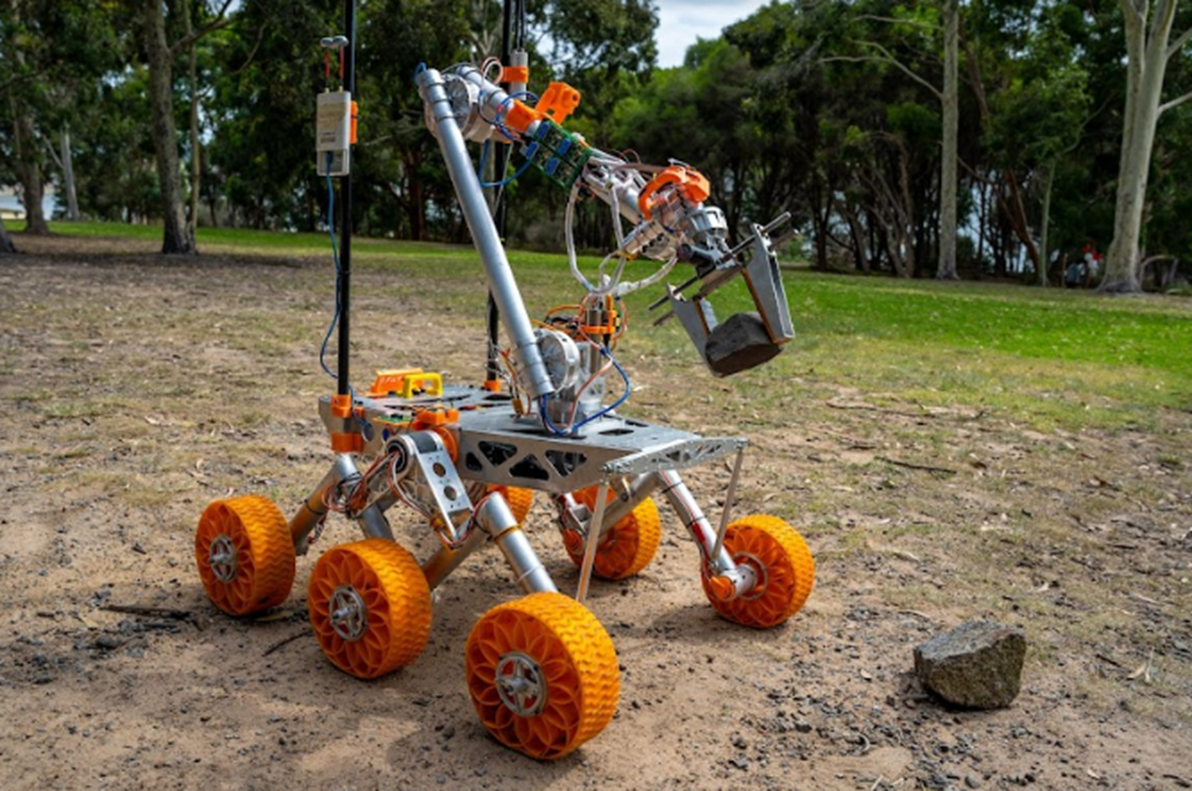
Rover Robotic arm at field test (2021)
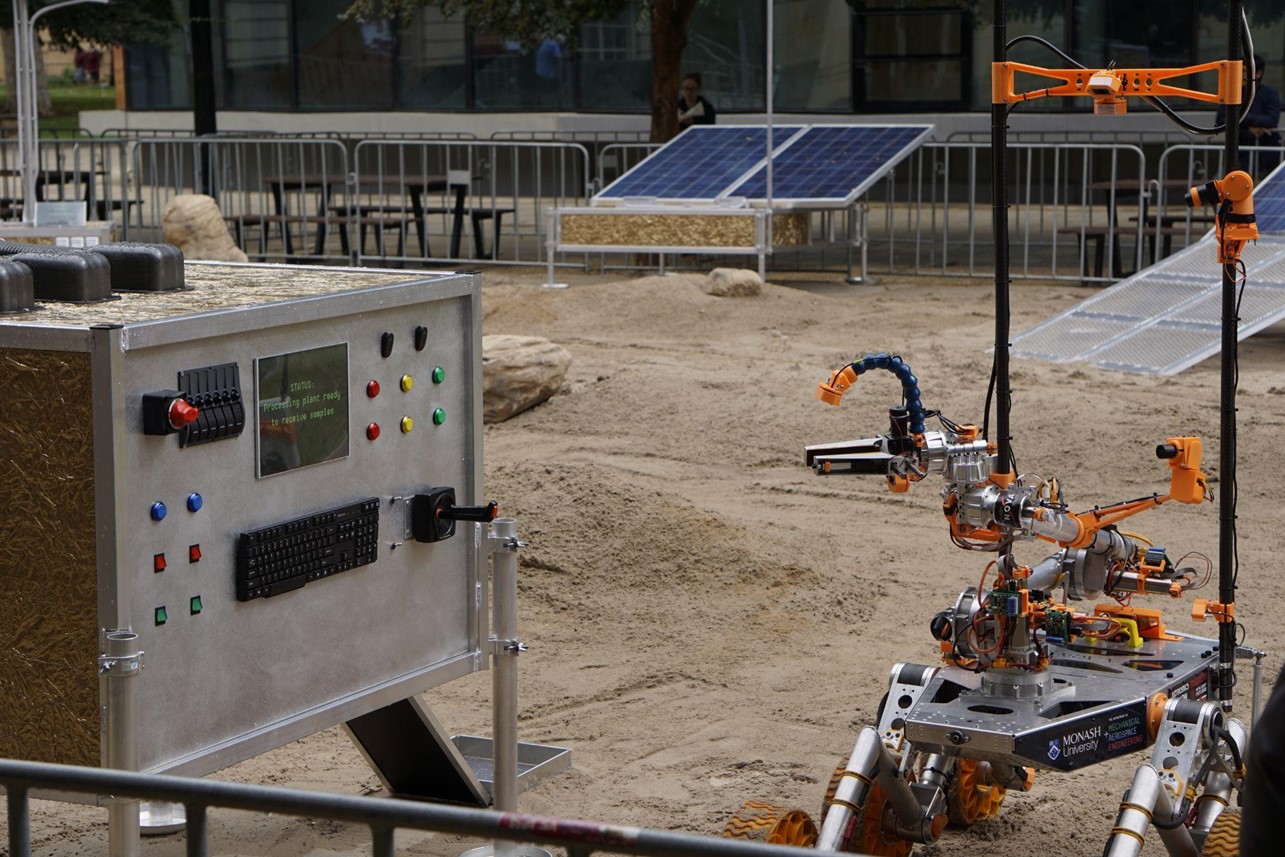
Australian Rover Challenge, Post landing task (2021)
Michelle, the Robotic Arm Lead, describes how “confidence in oneself and one’s abilities play an essential role in empowering girls and young women to pursue STEM careers” and is something she has seen in her own life and the young women she leads. Michelle explains, “I now run the Melbourne RoboCats, a high school robotics team and lead Monash Nova Rover’s Robotic Arm team with a focus on building confidence not just in yourself but what you are capable of becoming and achieving.”
Siena, current Deputy Team Lead and previous Lead Chassis Engineer, says that "finding your place in STEM is as much about a conversation with others as it is about the conversation you have with yourself. Success does not come without growth, and growth does not come without being challenged. It's about the confidence to make mistakes, the responsibility to reflect on them and the capacity to discuss obstacles - and listen to others' experiences in return. That is why Nova is a place where everyone belongs; it bears a culture of tolerance and exploration, equipping its members with the skills and tools to thrive - and help others thrive - in the midst of the changing future."
“The common phrase, two minds are greater than one perfectly encapsulates the essence of STEM” – and our team - Bec Leith.
The Monash Nova Rover Team is a multidisciplinary engineering student team aiming to build remotely-operated and autonomous Mars and Lunar rovers to compete in the annual University Rover Challenge (URC) held in Utah, US, and more recently, the inaugural Australian Rover Challenge (ARC) held in Adelaide, AUS. The team placed 9th overall out of a total of 84 teams internationally in URC 2019, and 1st out of 3 teams in ARC 2021.
Monash Nova Rover team are 90+ Undergraduate and Postgraduate students with one third female representation. The team is already a leader in the development of rover technology in Australia, with competition missions requiring the rover to conduct in-situ resource identification, extract and deposit simulated lunar regolith at three potential sample sites bearing varying levels of frozen water.
Rovers will process the extracted regolith and deposit recovered liquid water and remnant material to the processing plant supply cache amongst other challenges.
Q&A with the Nova Rover team about their experiences
Gemma Quinn, Science team

What made you interested in science and why did you choose your specific field?
I was always curious about the world, I enjoy figuring out how things work. In primary school we had someone come into our school to talk about space and they brought a rock that could float on water and told us that it floats because it has a lower density than water, and Saturn would also float. I remember thinking “Ok, I will be an astronaut” because I wanted to see and learn more about space and how the world works. I now study aerospace engineering and immunological science, build rovers in my spare time, and just started a job as an aircraft builder with Swoop Aero! I'm passionate about learning, particularly STEM-related subjects, and enjoy sharing that knowledge with others to inspire and encourage their ambitions. I am also a course developer and instructor for Intelligent Futures Australia - Developing and teaching STEM courses about game design and programming to primary and secondary school students. Gemma has a Bachelor of Aerospace Engineering (Hons) and Bachelor of Science (Immunology major, Field Of Study minors in Maths and Plant Sciences).
What are the gender stereotypes for women in science that you contend with (if any)?
I dislike the stereotype of women not being as smart as male counterparts, we definitely are. I think it’s important to know your worth and not be afraid to be wrong in class too, surrounding myself with other women in STEM helped me realise this. I am very aware of making sure women around me in the team and in class feel heard.
What obstacles have you faced as a female embarking on a STEM career?
I think the biggest obstacle is frequently having to prove your worth and competence. That is what is so nice about science and engineering groups which have multiple women working in leadership and technical roles, there is a heightened sense of belonging.
How do you address the gender gap in your specific area of science?
I like to promote aerospace engineering! And show anyone that they can learn and be a part of STEM, especially with hands-on things like playing around with coding, or building projects - I think that gives people more confidence. Starting is the hardest part, and it’s good to fail! I’d recommend playing around with an arduino kit where you can build all sorts of things like LED displays and motor-driven cars.
What have you done in your career that you are most proud of?
Immersing myself in the Nova Rover team and learning so much about coding, machining, designing engineering parts with others; is what I am most proud of. Once you get started and build things you enjoy, and challenge yourself to learn electrical and software systems too, you realise you can do STEM, and do it well. I particularly enjoyed working on the NASA JPL “Honey, I shrunk the payload” challenge, where we designed a lunar payload the size of a bar of soap for NASA’s artemis missions.
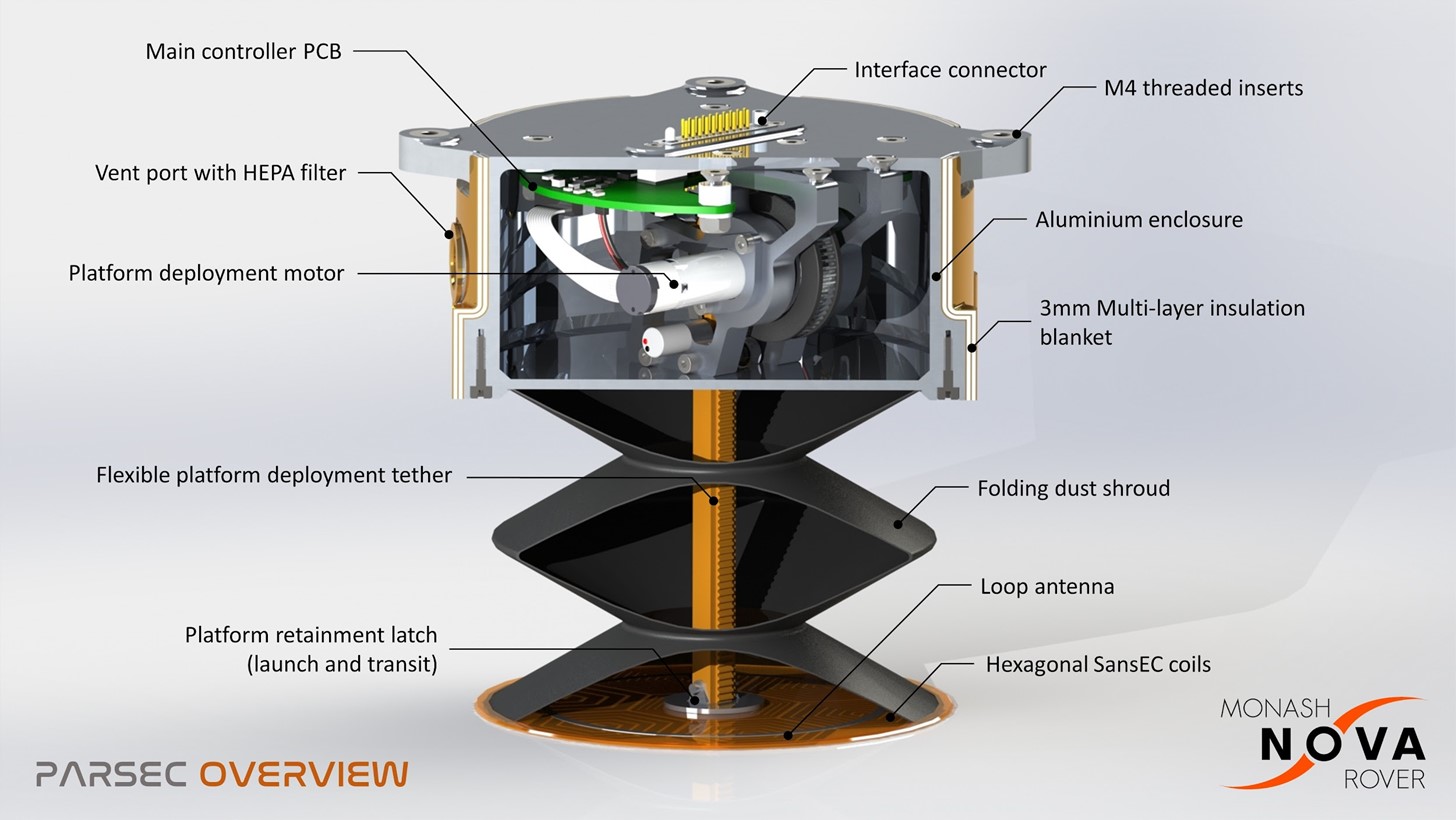
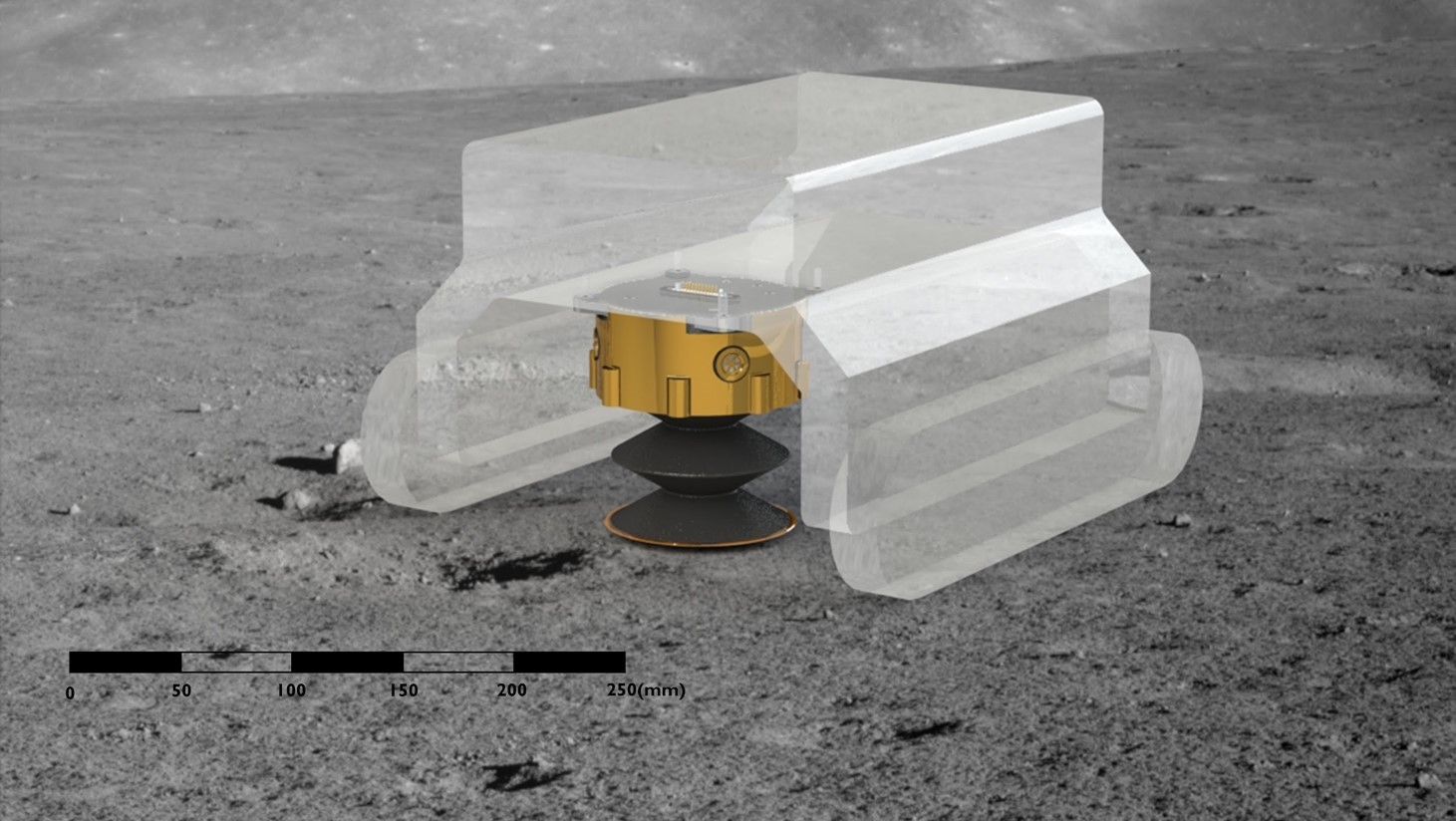
Micro payload for lunar rover NASA JPL “Honey, I shrunk the payload”challenge. CAD by Benjamin Jessett (Team Lead) and Siena Zubcic (Dep. Team Lead).
Where do you see yourself going with aerospace engineering?
Working on advancing Australia's space industry and capability into the future, I'd like to work on planes and space grade technology specifically. I am excited for Australia's first lunar rover and the many missions to come following it!
Bec Leith, Science team – Chief Scientist
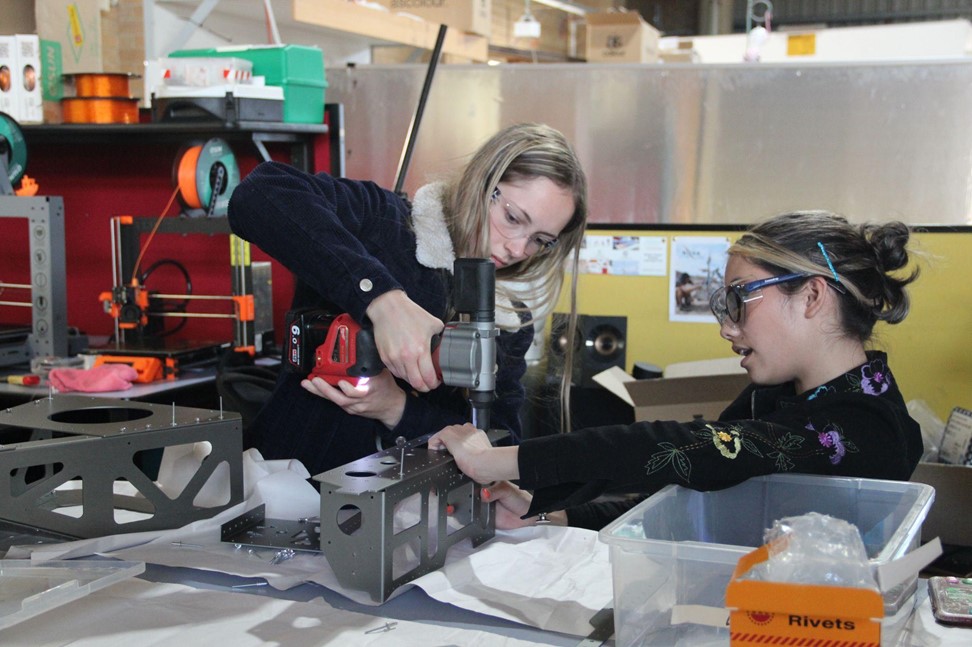
Assembling the 2022 Rover Chassis. Pictured: Bec Leith and Chloe Chang
What made you interested in science and why did you choose your specific field?
I began studying Science on a whim. As a teenager, I trained to become a professional ballerina, which took precedence over my schoolwork and like a horse with blinkers, I could only focus on that goal. When I fell out of love with the ballet industry, I took a chance and enrolled in a Bachelor of Science. I fell in love with chemistry as well as finding a passion for engineering which led me to enrol in that discipline as well. I have found it so rewarding to share ideas with others and collaborate to come up with a solution that combines aspects which each person brings into something that no single person could have devised on their own. For me, this is the most important part of STEM and what draws so many people to pursue it. The knowledge and skills of one person can be amplified greatly when combined with the knowledge and skills of others. The common phrase, two minds are greater than one perfectly encapsulates the essence of STEM. In engineering, collaboration is so heavily encouraged that it is rare for people to work completely alone on a project. Even the scientist working alone in the lab bases their study on years of research conducted by others, and has their work reviewed by peers in various stages of the project. I feel so lucky to be in an industry where many hands make the impossible into light work.
What are the gender stereotypes for women in science that you contend with (if any)?
There’s a stereotype of being a “tom-boy” that is, preferring clothes/hobbies that are typically associated with males. I really push myself to wear pink or floral or dresses instead of hiding these clothes, which I used to frequent back when I was a dancer. I also think my background in dancing contends with the stereotypes as I receive reactions of complete surprise when I tell people that I was a dancer. Another thing is that I really like maths and feel that maths is perceived as a male dominated interest as well. I try to really promote maths to others, especially young children, because I think the stigma around maths is most prevalent in primary school.
What obstacles have you faced as a female embarking on a STEM career?
A big obstacle has been feeling the need or being asked to explain myself when I say I love STEM. I find that friends and even family challenge me and can’t believe that I could enjoy STEM when I’ve always been known as the ballerina. There is also the tendency for people to believe that because of being in the minority, employers will be more likely to hire females and therefore, my gender outweighs my skills.
How do you address the gender gap in your specific area of science?
I’m determined to make an impact in addressing the gender gap in STEM. I feel that whenever we are given a platform where real change can be made, we must seize the opportunity. My fellow teammates in Monash Nova Rover feel the same way, which is why we are currently creating a campaign to promote and engage females in STEM. Chloe Chang and I are leading the campaign which will involve visiting schools to educate students and teachers about the power of STEM careers, supplying female role models as mentors to young students, working to bring together the community of females in STEM at Monash and teaching the Monash Nova Rover community how to become advocates for gender equality in STEM.
What have you done in your career that you are most proud of?
Taking the first step to create the females in STEM campaign has made me proud of my student team. I am very excited to see the impact our campaign makes over the course of 2022. Something I am personally proud of in my career so far was the completion of my first solo research project on gold nanoparticle optics. I completed this project during the lockdown of 2020 and worked completely alone to conduct research on the optical properties of gold nanoparticles. My research involved creating simulations of gold nanorods to identify the expected resonant frequencies across the surfaces of differently shaped particles. Resonant frequencies are best seen in everyday life when you play your radio too loud in the car and parts of the car start to vibrate (or when an opera singer breaks a wine glass by singing very high). This is because all particles have resonant frequencies - meaning when light or sound waves hit them, there is a matching frequency at which they are amplified (known as constructive interference). One of the most interesting applications of gold nanoparticles is in cancer therapy. To kill cancer cells you can burn them, but this would also kill healthy cells if not done carefully. Gold nanoparticles have resonant frequencies in a part of the infrared range that allows heating (burning) of only cells closest to them, this allows cancer cells to be targeted by injecting gold nanoparticles into the body and treating them with infrared light. Gold (and silver) is also safe to put in the human body - hence we wear it as jewellery. During the project, I realised I had never worked alone like this and was not confident in my ability to interpret my results. It is easy to gather lots of data and conduct experiments, but it is hard to look at all the numbers and turn them into a hypothesis. But I turned my data into lots of graphs which allowed me to understand the data and write the final report. The feedback for my final report said it was impeccable and this gave me confidence that I’ve never felt before.
Chloe Chang, Chassis Lead
What made you interested in science and why did you choose your specific field?
Growing up I was always mathematically inclined but also quite creative and passionate about visual art. “I like science because it is the language that describes everything in the known universe”.
As I am quite curious by nature, as most of us are, it is always interesting to learn how things work. Unsure what to choose for tertiary studies I chose engineering because I wanted to challenge myself, however I did not know the first thing about engineering. As my first year progressed, I fell in love with the degree and I joined Nova Rover where I was mentored and exposed to robotics and rovers. I then chose mechatronics and robotics to specialise in because I felt it combined and utilised my maths and design orientated minds well. As we are entering the automation and AI revolution I thought it was exciting to have a degree that would give me a deeper understanding of the technological world around me.
What are the gender stereotypes for women in science that you contend with (if any)?
The fact that you are female will be a big part of your identity in STEM fields because you will often be the only one. So it is hard to not shove you in a box with all the gender norms that come with it.
Simply, I despise the stereotype that women in STEM are either boring and unattractive or well-dressed and dumb. You can only be either one. There are so many harmful stereotypes around what and who STEM should look like, that women are trying to constantly prove wrong, or women are being told and believing so, resulting in women never engaging with a career in STEM at all. It is the judgement and fear of failure that stops more people especially women from pursuing a career in the male dominated field.
What obstacles have you faced as a female embarking on a STEM career?
I grew up attending an all-girls school so entering the male dominated engineering field was a very different and new experience. I express myself through what I wear, as a lot of us do, and I like to be feminine and fashionable. In my first few classes I was either the only female or one of very few. So I stuck out like a pink unicorn most of the time. It didn’t bother me too much but often I felt people overlooked me or just assumed I was a dumb girly girl and wasn’t taken seriously. I would get “Are you sure you can do that with those nails?’ or ‘Was that the right outfit to be wearing for today’s workshop?’. To overcome this initial judgment I felt like I had to work harder to earn the right to spend time on how I look and have a place in the discussion.
Another obstacle I often face is the constant preface that I am only here because I am a woman and today, they positively discriminate so I am just a diversity hire. If I had a dollar every time, I heard a statement discrediting women in STEM inferring that diversity and inclusion schemes are the unfair reason for their existence, I would be rich.
As a woman in STEM without a doubt someone will tell you that you, a woman, are not smart enough or biologically incapable of pursuing a career in STEM and are better off as nurses or some gender normative occupation ‘suitable’ for a woman. This for me has been one of the most challenging things to overcome. Everyday I wake up to prove something wrong. I was told, ‘You will never be able to understand as well as man, because statistically it’s been proven women are not born with systematic thinking capabilities… That females are being forced and told that they are something they are not, an engineer for example’. And it goes on and gets worse, but long story short this was the mindset of someone I really looked up to. From the beginning I was never an equal in his eyes I could never earn his approval. Obviously we should not continuously be seeking approval from people, but it is only natural when you work with them.
How do you address the gender gap in your specific area of science?
The gender gap is a big issue, but so subtle that the effects are often unnoticed. To address this issue, I believe by raising awareness, educating and exposing younger generations of women to STEM.
By having open discussions about your experiences as a female in STEM raises the awareness of the struggles women often face. It is important to find the courage to speak up and share your story as it connects and supports us. I think it is also important to be clear with the message. The importance of diversity in STEM. Currently we are not accessing the greater pool of creative and scientific thinking to solve the world’s problems, ‘diversity fosters greater innovation’ (UN Chief, 2021 Feb). When we say we want a 50/50 ratio we are not saying we will replace 40% of men with women, we are creating space for women by making more jobs available. Simply adding more chairs to the table, we just need to let women know that they belong at the table.
It is important to have calm conversations with people, ignorance is not a crime, someone who does not understand the gravity of their thinking does not have to receive the consequences. Just as we are asking people to be more open and change the way they see women in STEM, we too have to open to people who are closed to women in STEM. They are not bad people but just need a common ground to discuss the issue so they can understand. Sometimes people can be ostracised and labelled a sexiest or mysgonist. As true as that may be, we have achieved nothing only pushing these people away by ‘othering’ them and pushing them deeper into their mindset. Instead I try to take the time to discuss in a positive way where both sides are being heard. They may be thinking the wrong way but if you treat people respectfully, I find you have much better luck convincing them of your point.
Lastly, exposing young girls to STEM. The easiest way to do this is to employ more female role models. Currently there is a lack of female role models. Providing female role models in STEM will boost representation, it shows to girls that these professions are attractive and attainable. It’s important the girls don’t view STEM as a men’s field and female mentorship plays a powerful role in changing that narrative.
What have you done in your career that you are most proud of?
Being accepted into the Chassis team on Nova Rover was one of the proudest moments in my career. I was a first year student and was quite frankly clueless. It was actually my friend who convinced me to apply. I just felt I wasn’t good enough for the team.
In the team I was challenged like never before. I have learnt and grown so much in my time on this team. I am particularly proud of the latest Chassis body re-design, a project that took 3 months to design. I feel like every day I learn more and more about my own potential and what I am capable of.
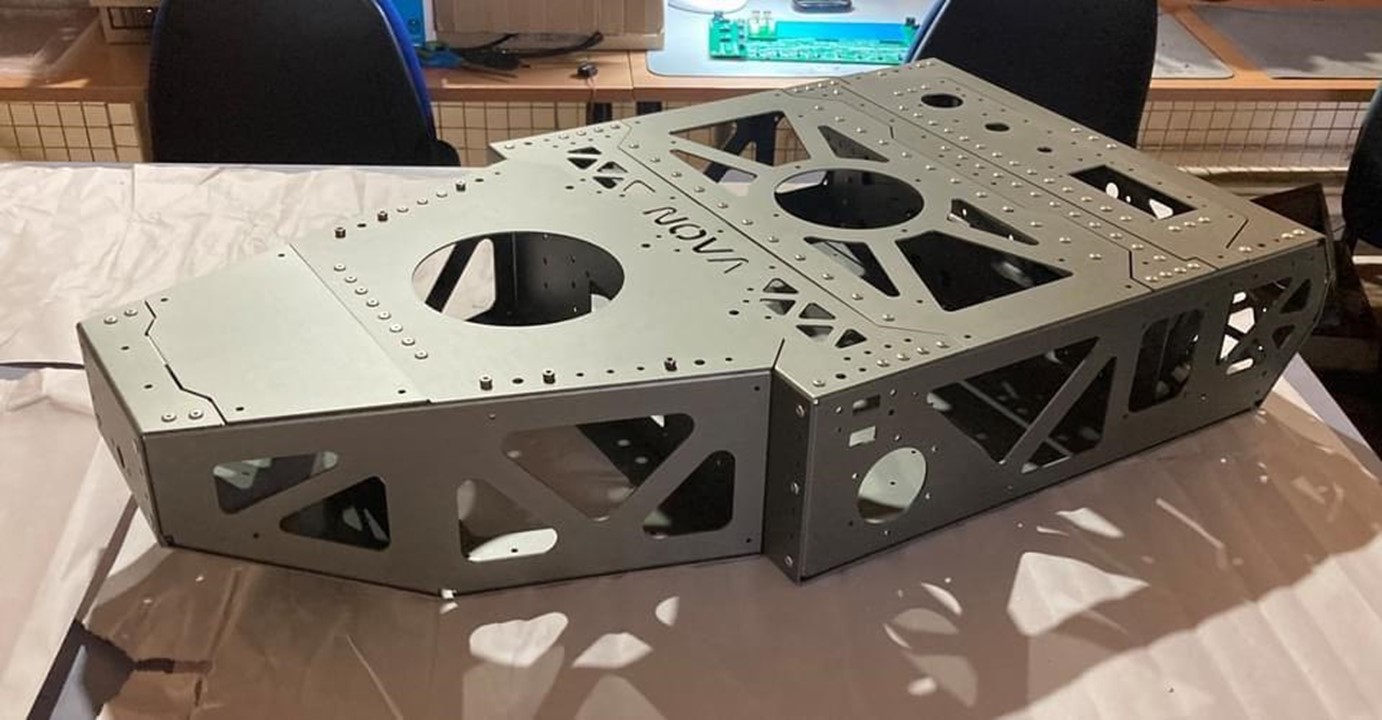
Sheet metal Chassis Body Assembly Melbourne 2022
About the Nova Rover team
The Monash Nova Rover team are a national and internationally competitive group of students who have developed novel micro-rover payloads for detection of oxides on the Lunar surface and a rover under 50Kg capable of remote and autonomous operation up to 1 km. It can collect up to 500g of regolith (unconsolidated rock and dust that you might find on the moon) and provide in-situ water extraction. The Nova Rover team is now aiming to participate in the development of a Lunar rover as part of Australia’s Trailblazer program, by partnering with the space and science industry.
Rovers
- NASA has sent five robotic vehicles (rovers), to Mars. The names of the five rovers are: Sojourner, Spirit and Opportunity, Curiosity, and Perseverance. The mission's scientific goals was to search for and characterize a wide range of rocks and soils for clues to past water activity on Mars.
- The Moon to Mars: Trailblazer program will be Australia’s mission to send a rover to the moon with NASA as early as 2026.
- The semi-autonomous rover will collect lunar soil that contains oxides, and using separate equipment, NASA will aim to extract oxygen from the soil. This is a key step towards establishing a sustainable human presence on the Moon and supporting future missions to Mars.
Space tech
- The next wave of technology disruption and industry digital transformation will come from solving problems for space as the benefits of these technologies will be realized through their application to everyday activities here on Earth
- Pace of investment from the private sector is increasing as NASA partners with the private sector. The Australian Space Agency’s $165m commitment to support the Australian supply chain to engage in global missions has been an opportunity for Victoria’s emerging space industry.
- Victoria is an important actor in the Australian space supply chain, providing a lot of the components for firms developing rockets, for example
- Space will inspire the future STEM workforce for the benefit of industry, research, government and the community.
- Space technologies and applications are widespread across all sectors of society (e.g. GPS).
Visit www.novarover.space.
What is the relationship between aerospace engineering and immunological science?
An interesting pair! Space health and medicine is a huge upcoming sector, which Gemma finds fascinating to learn about. It's important to learn how human bodies and diseases change in the space environment, to figure out ways to reduce health issues, which will be very important for the future long missions to the Moon and Mars. Gemma suggests this recent article.
It also helps understand and improve medicine back here on Earth too, similar to how a lot of space research and technology paved the way for improving life on Earth (solar cells, water filtration, camera phones, and baby formula all came from inventions created for space exploration)!
The other application I see is transport logistics that assist immunology, including quickly transporting medicines, healthcare supplies, emergency blood tests and pathology samples, and vaccines, via small unmanned aircraft particularly in remote areas or after flooding.
What is a scooping and deployment system, and science payloads?
The international University Rover Challenge Science mission held at the Mars Desert Research Facility in Utah, is to analyse up to six rock and soil samples for life and distinguish between extant and extinct life using in-situ analysis on-board the rover. To do this, the science team designed, built, implemented, and tested a platform system which is deployed, with four Curiosity-Rover inspired scoops that collect separate samples of regolith.
After samples are collected, they are analysed inside the URC science payload. Buffer is pumped into each scoop, and a series of pumps extract and process the solution, to analyse in a custom-built chemical spectrometer for markers of life (enzymes, and proteins). The platform system also houses sensors to detect distance, and an actuating microscope to observe rocks in fine detail for fossils and rock characteristics (e.g. water weathering) which can indicate previous life.
The second scientific payload we used in the Lunar Resources task for the 2021 Australian Rover Challenge (ARC, Adelaide). This mission required the rover to analyse the water content of three sites, and collect and transport as much regolith from the highest water content site. Bec Leith researched, developed and tested various sensors including camera detection and moisture probes, and last year we ended up successfully using the hydraprobe to detect water.
Both these payloads required lots of planning, testing, and implementation of software and electrical systems including custom PCBs made by the electrical team.
About the day
The 7th United Nations International Day of Women and Girls in Science Assembly focuses on the topic “Equity, Diversity, and Inclusion: Water Unites Us". Water is the basis of the fluids of living organisms, essential to our survival and thus unites us all. This year in Victoria, we also recognise the reality that science and gender equality are both vital for the achievement of internationally agreed upon United Nations Sustainable Development Goals.
View more stories
You can discover more stories of how women have pursued careers in science and passion to make a real difference.
“We invite you to read and share the stories, and celebrate women in science to inspire our future female scientists pursue their passion and make waves across industries” - Dr Gillian Sparkes AM.
These stories were selected for the positive impacts made to improve water in Victoria and beyond, and thus to our environment and the health and wellbeing of the Victorian community.
